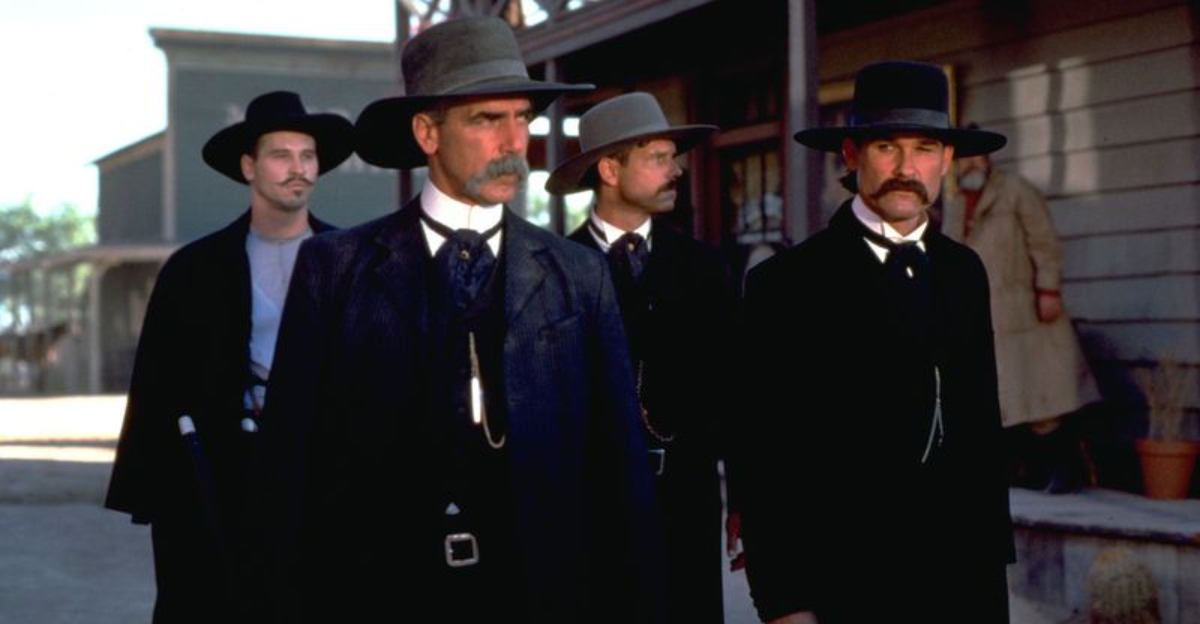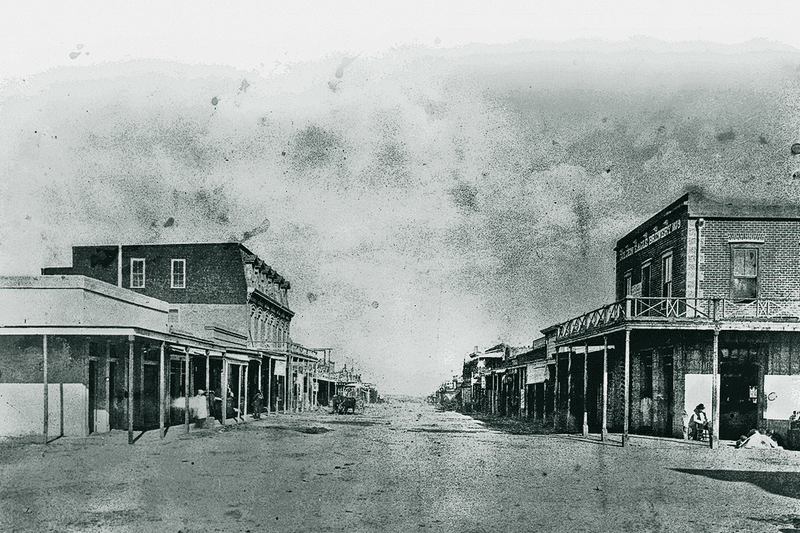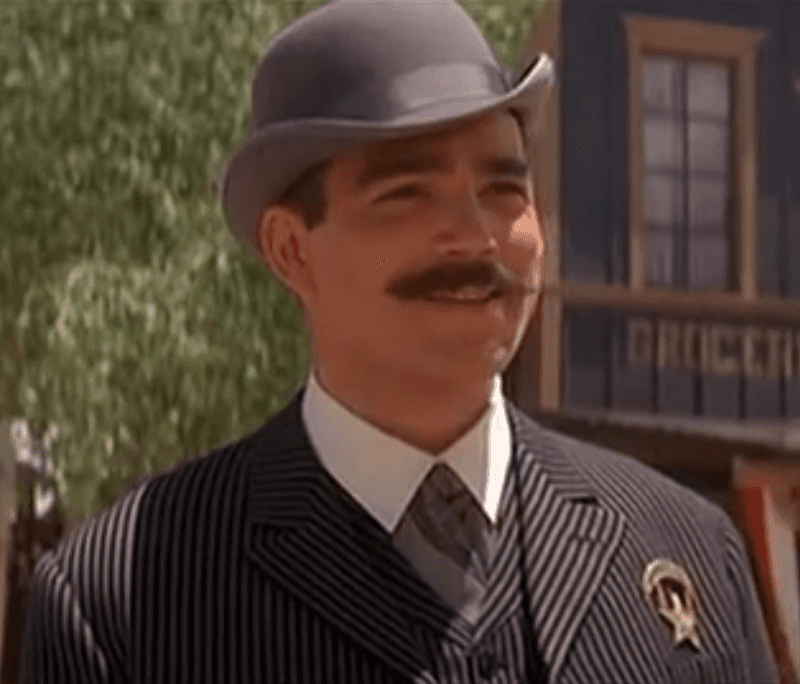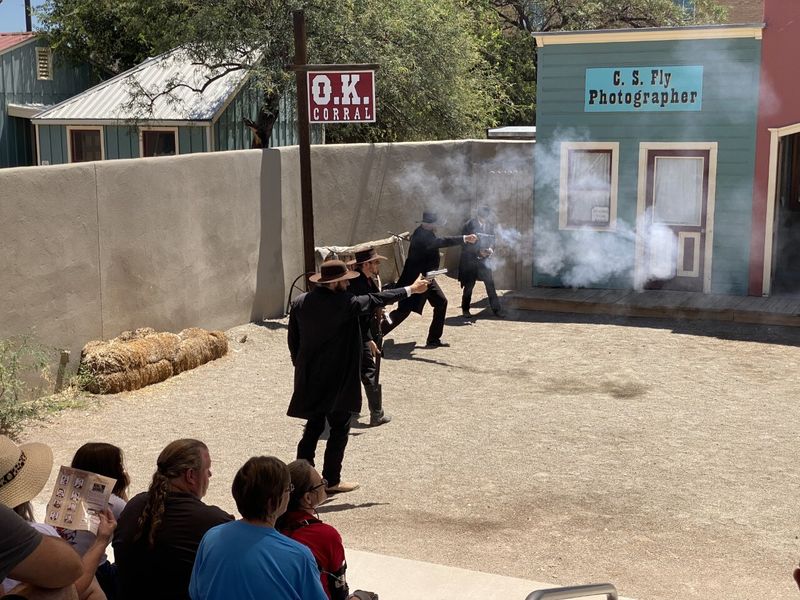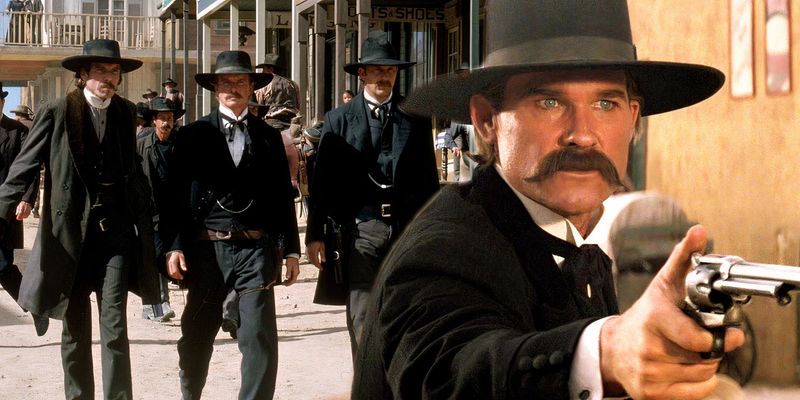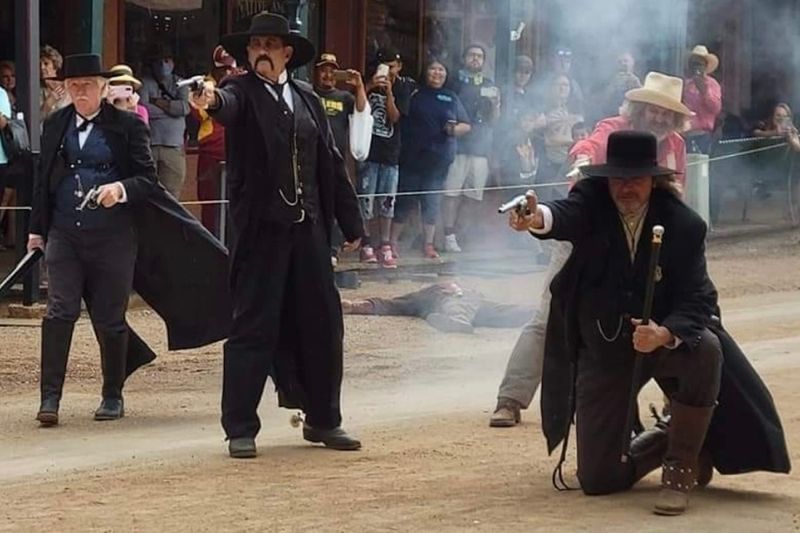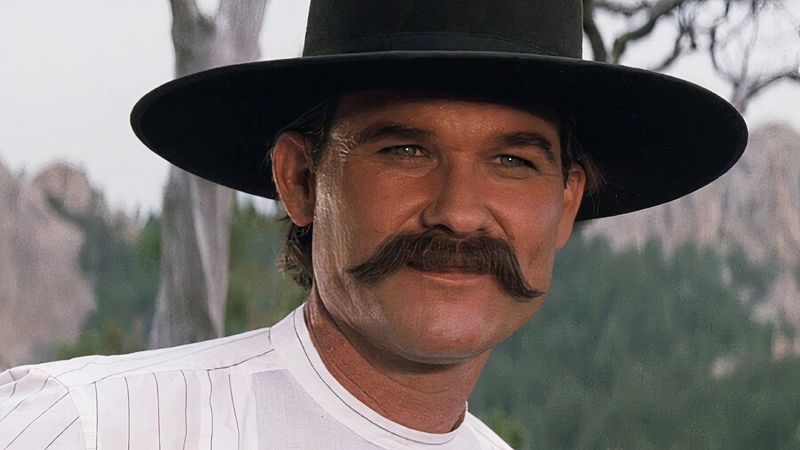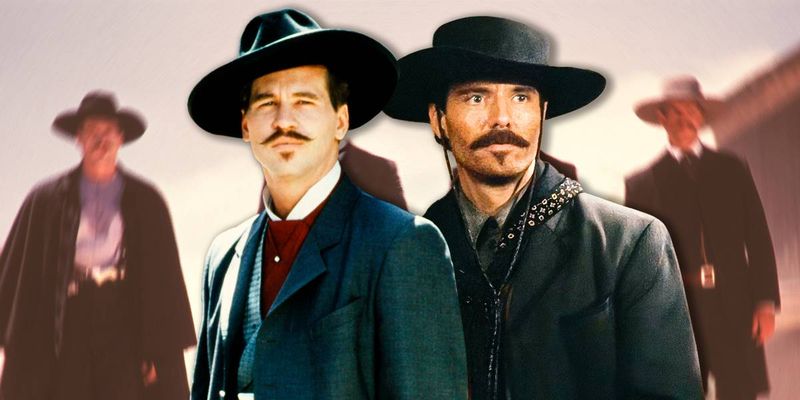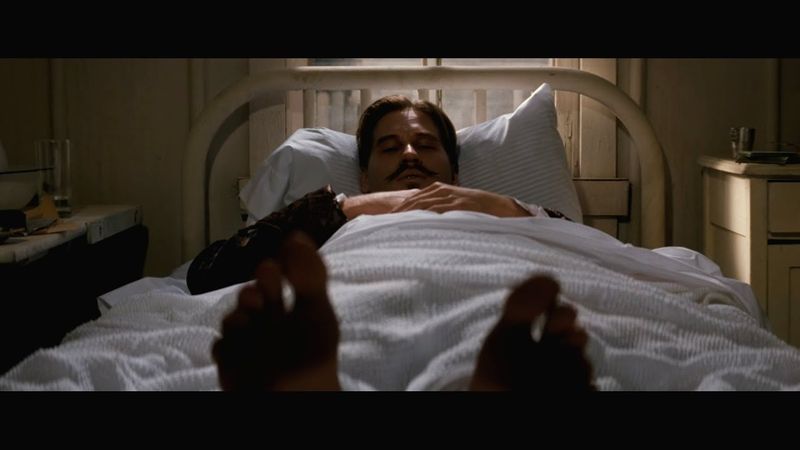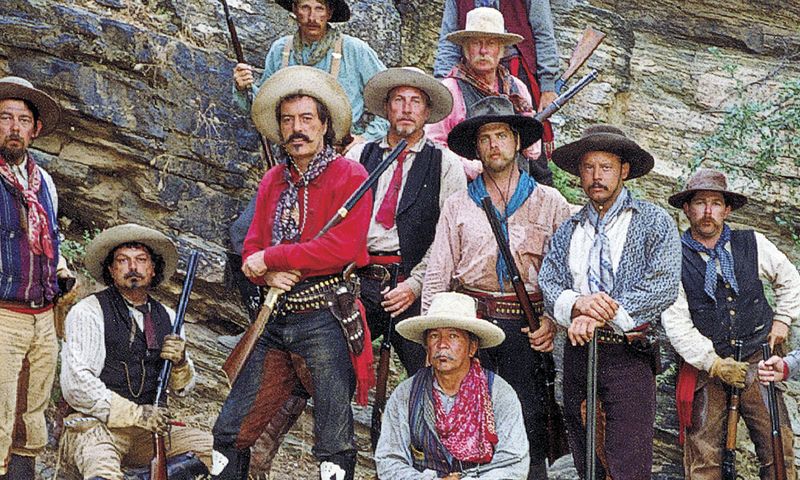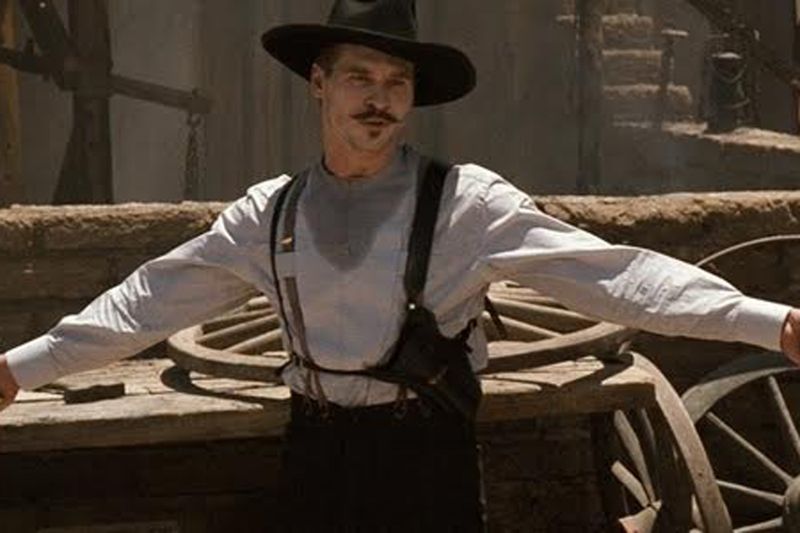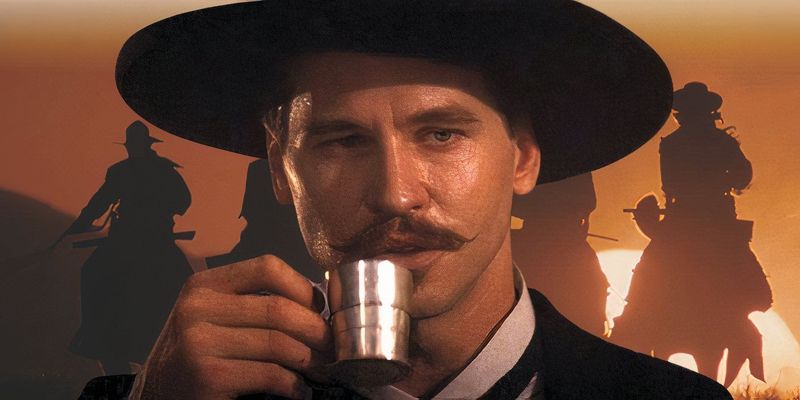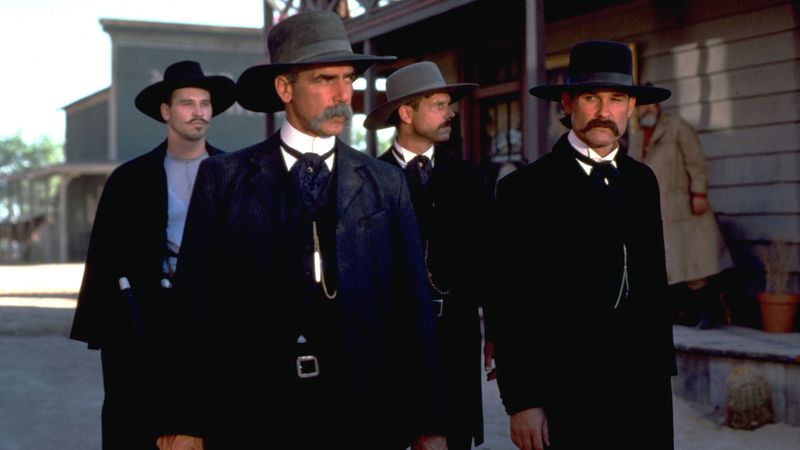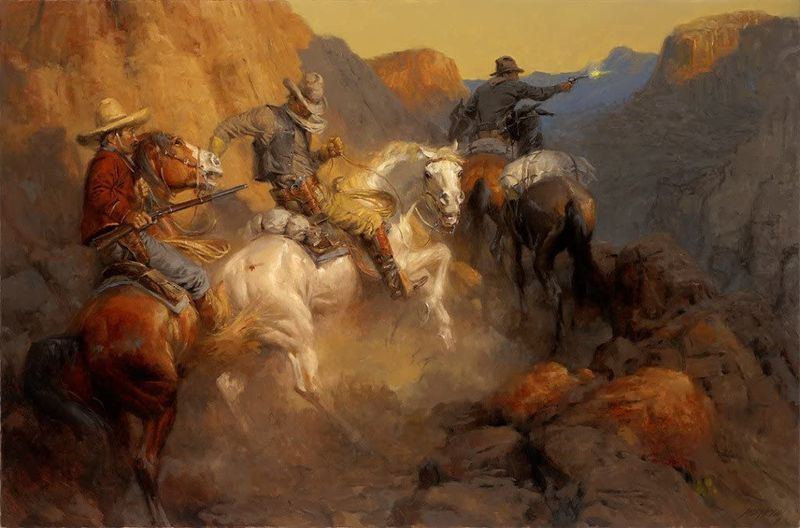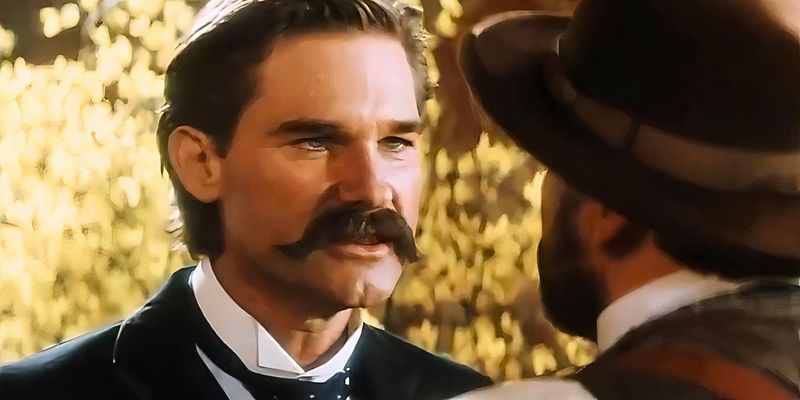The 1993 movie “Tombstone” is a cinematic classic that intertwines myth and reality in its portrayal of the Wild West. However, the film takes artistic liberties, altering historical events for dramatic effect. This article examines 17 myths from the movie, revealing what actually happened in Tombstone, Arizona, in 1881. With a blend of detailed analysis and historical insights, we uncover the truths behind these Hollywood embellishments.
1. Earps’ arrival in Tombstone
Did Wyatt and his brothers really arrive at the eleventh hour before the infamous shootout? Contrary to cinematic portrayal, the Earp brothers didn’t just breeze into Tombstone before the gunfight. Wyatt, Virgil, and others stepped into this dusty frontier as early as December 1879. Morgan and Doc Holliday followed suit by mid‑1880, setting the stage long before tensions boiled over. Their early arrival allowed them to establish themselves in town, intertwining their fates with Tombstone’s tumultuous history. What led the filmmakers to condense this timeline? Perhaps it was the allure of dramatic immediacy.
2. Cochise County Sheriff
Was Johnny Behan already Cochise County’s sheriff when the Earps arrived? The film might suggest so, but reality paints a different picture. Tombstone was initially under Pima County’s jurisdiction. In 1880, Cochise County was formed, and Behan’s tenure began thereafter. This administrative shift marked a significant chapter in local governance. The sheriff’s role, often portrayed with Hollywood flair, was pivotal in Tombstone’s law enforcement narrative. Behan’s real-life position came with complexities that surpassed any scripted drama. His political maneuvers and allegiances shaped the town’s volatile environment.
3. Location of the gunfight
Is the O.K. Corral the true site of the legendary shootout? Popular cultural depictions certainly favor this iconic location. However, the deadly confrontation occurred not in the corral but in a narrow lot outside C.S. Fly’s photo studio on Fremont Street. This lesser-known location, with its bustling street life, holds the true essence of the infamous encounter. The choice of setting in film adaptations perhaps adds to the allure of the Wild West’s mystique, but sacrifices geographic accuracy. Such artistic liberties create lasting myths that overshadow historical truths.
4. Length of the shootout
Hollywood loves a drawn-out standoff, but how long did the real gunfight last? Forget the protracted duels of cinematic legend. The actual exchange of bullets was a swift and chaotic affair, lasting merely around 30 seconds with approximately 30 shots fired. This brief yet intense confrontation left an indelible mark on history, transforming ordinary men into enduring legends. The brevity of this clash highlights the unpredictability and raw energy of frontier justice. While the screen exaggerates for suspense, the reality was a whirlwind moment that shaped the narrative of the Wild West.
5. Who was wounded or killed
Who truly fell during the infamous gunfight? The film might focus on the McLaurys’ demise, but the reality holds more. Three men perished: Tom and Frank McLaury and Billy Clanton. Meanwhile, Doc Holliday was grazed, and both Virgil and Morgan Earp sustained injuries. This violent encounter’s human cost left a lasting imprint on those involved, weaving a complex tapestry of sorrow and survival. These mortal stakes reveal the high tension and personal vendettas simmering beneath Tombstone’s dusty surface. The film’s selective depiction offers a skewed perspective on this historical tragedy.
6. Timing of Virgil’s and Morgan’s attacks
Did the assaults on Virgil and Morgan Earp unfold simultaneously, as Hollywood suggests? In truth, these ambushes occurred months apart, with Virgil attacked in December 1881 and Morgan in March 1882. This staggered timeline showcases the persistent danger and vendettas plaguing Tombstone. The delayed violence underscored the relentless pursuit of revenge, a theme often dramatized but deeply rooted in reality. Each attack marked a chapter in the turbulent saga of the Earps, highlighting the unforgiving nature of frontier justice. The movie’s condensed timeline simplifies complex interpersonal conflicts.
7. Doc Holliday vs. Johnny Ringo duel
Did Doc Holliday and Johnny Ringo ever duel to the death? Their legendary showdown exists only in the realm of fiction. No such clash unfolded between these iconic figures. Ringo’s demise in July 1882 was likely self-inflicted, shrouded in mystery and speculation. This mythologized duel, while captivating, distracts from the real complexities of their lives and rivalries. The fascination with legendary face-offs feeds the cinematic imagination, crafting heroes and villains with broad strokes. However, the truth is stranger and more nuanced than the simplified tales spun by Hollywood.
8. Wyatt at Holliday’s deathbed
Was Wyatt Earp really at Doc Holliday’s side during his last moments? The movie suggests a touching farewell, yet history tells a different story. By 1887, the two had drifted apart, with Wyatt absent at Doc’s deathbed in a Colorado hotel. This poignant reality underscores the transient bonds of the Wild West’s legendary figures. Their camaraderie had faded, a testament to the shifting alliances and harsh realities of frontier life. The romanticized image of their friendship endures in popular culture, offering a comforting narrative amid the harsh truths of their era.
9. Ike Clanton’s fate
Did Ike Clanton meet his end in the infamous gunfight? Contrary to cinematic depiction, Clanton survived and faced justice in court, where he was later acquitted. His tale of survival diverges from the tragic fates of his companions, reflecting the unpredictable twists of frontier life. Clanton’s courtroom saga adds a layer of complexity to his character, challenging the simplified narrative of a doomed outlaw. The enduring myth of his death in the shootout illustrates how legend often eclipses fact, reshaping public perception of Tombstone’s tumultuous history.
10. The Cowboys’ unity
Was Ike Clanton truly the leader of the Cowboys? The movie might suggest so, but leadership within the gang was more fluid. Initially helmed by “Old Man” Clanton, the reins later passed to Curly Bill Brocius and Johnny Ringo. This dynamic leadership structure fueled internal rivalries and power struggles. The complex web of alliances and betrayals shaped the gang’s turbulent history. Despite cinematic portrayals of a united front, the Cowboys’ reality was far more fractured. Understanding this nuanced hierarchy offers deeper insights into the motivations and machinations of Tombstone’s outlaws.
11. Gun count and weaponry
Were the men of Tombstone heavily armed with rifles and revolvers during the shootout? Contrary to Hollywood’s depiction, participants likely carried only a single revolver. The chaotic nature of the battle made it challenging to determine who fired the fatal shots. This minimalist armament reflects the gritty realities of frontier conflict. The focus on a smaller arsenal underscores the tension and immediacy of the encounter. The exaggerated portrayal of weaponry in film enhances drama but diverges from the practical limitations faced by these historical figures.
12. Public opinion in town
Did Tombstone’s residents unanimously support the Earps? The film might create this impression, but opinions were sharply divided. Many sided with the Cowboys, as evidenced by Johnny Behan’s testimony. This split sentiment highlighted the complex social dynamics at play, where allegiances shifted based on personal interests and rivalries. Tombstone’s populace navigated a landscape of loyalty and betrayal, crafting a multifaceted narrative often overlooked in cinematic interpretations. The nuanced tapestry of public opinion challenges the notion of clear-cut heroes and villains, revealing a town torn by conflict and intrigue.
13. Hollywood dialogue authenticity
Are the iconic lines in the film purely fictional? While some may be embellished, many were inspired by real newspaper accounts, including Doc Holliday’s famous quips. These documented exchanges capture the wit and bravado of Tombstone’s colorful figures. The blend of authentic dialogue with Hollywood storytelling enriches the film’s narrative, bridging fact and fiction. By anchoring the script in historical sources, filmmakers crafted a tapestry of words that resonate with audiences, capturing the spirit and tension of the era. This interplay of reality and creativity underpins the movie’s enduring appeal.
14. Mustaches and costume detail
Were the film’s stylized appearances solely a product of Hollywood imagination? Surprisingly, the actors’ mustaches and costumes were historically accurate, not mere aesthetic choices. This attention to detail reflects a commitment to authenticity in visual storytelling. The carefully crafted appearances echo the fashion of the era, grounding the film in a tangible reality. While the narrative may take liberties, the visual elements hold a mirror to the past, inviting audiences into a world both familiar and extraordinary. This blend of style and substance enriches the cinematic experience, enhancing the film’s historical resonance.
15. Skeleton Canyon Massacre
Why does the film omit the Skeleton Canyon Massacre? This brutal ambush in July 1881, led by Curly Bill and the Cowboys against innocent Mexicans, is often left out of cinematic retellings. The massacre’s absence from the narrative highlights a tendency to focus on more palatable events. However, this omission overlooks a critical episode in the Cowboys’ violent history. Acknowledging such events provides a fuller understanding of the complex moral landscape of Tombstone’s past. Incorporating these darker chapters enriches the historical narrative, offering a more nuanced portrayal of the era’s lawlessness.
16. Doc’s relationship timeline
Did Doc Holliday’s relationship with Big Nose Kate begin in Tombstone? The film might suggest a romantic spark ignited there, yet their bond predated the move. This enduring relationship highlights a personal dimension often overshadowed by cinematic drama. Their connection, forged in a world of uncertainty and danger, offers insights into the softer aspects of Holliday’s life. By focusing on their earlier ties, we gain a deeper appreciation for the complexities of his character. The film’s portrayal simplifies this timeline, missing the intricacies of their shared history and enduring partnership.
17. Blend of law and vengeance
Are the Earps portrayed as clear-cut heroes? While the movie often paints them as righteous, reality blurs the lines between law and vengeance. The Earps, with checkered pasts, navigated a tumultuous moral landscape, where justice and personal vendettas intertwined. Their infamous Vendetta Ride verged on vigilantism, challenging the notion of straightforward heroism. This complex interplay of motives and actions reflects the nuanced reality of frontier justice. The film’s simplified portrayal overlooks the depth of character and circumstance, offering a tale of good versus evil that simplifies the intricate dynamics of the Wild West.
